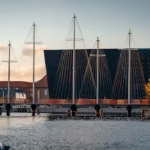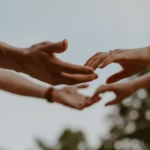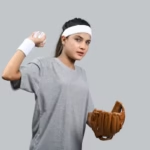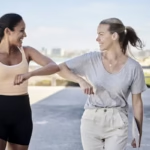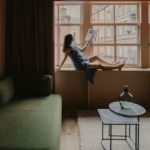Thedancerfaith is not a religion, a brand, or a viral hashtag—it is a rising cultural phenomenon rooted in the intersection of movement and belief. At its heart, it is a philosophy that holds dance as sacred expression, where the body becomes a vessel for truth, resilience, and renewal. For searchers seeking clarity: thedancerfaith represents a growing community and practice where dance is not just art or performance, but an act of devotion, healing, and identity. It fuses the kinetic with the contemplative. In a fragmented world, it offers motion as meditation, rhythm as prayer.
A Movement Born From Stillness
The term “thedancerfaith” emerged quietly online during the global pandemic, as dancers—cut off from stages and studios—turned inward. In isolation, some began sharing videos of dances that resembled more than choreography; they carried grief, hope, and defiance. Over time, these raw movements began to be shared with captions like “my dancerfaith,” or “this is how I pray.” Gradually, the phrase evolved: thedancerfaith—no spaces, no punctuation, no boundary between art and spirit.
It was never formally launched. No organization claimed it. Instead, it flowed organically through communities of dancers, spiritual seekers, trauma survivors, and creatives searching for meaning outside institutional frameworks.
Defining TheDancerFaith
At its simplest, thedancerfaith is a personal or communal belief system where dance becomes the central practice of connection—to self, to others, to divinity, or to the earth.
While the movement is diverse and decentralized, most adherents or participants tend to share these core principles:
- Embodiment is sacred – the body is not separate from the soul, but its instrument and oracle.
- Movement is meaning – dance expresses what language cannot; it carries memory, emotion, and transformation.
- Faith is personal – there is no dogma, only presence and awareness cultivated through motion.
- Community is practice – dancers often gather in physical or digital spaces to witness and support each other’s expression.
- Rituals are living – improvisation, repetition, and even silence become rituals in the dancer’s liturgy.
A Comparative Table of DancerFaith Values and Traditional Structures
| Aspect | Thedancerfaith | Traditional Religious Practice |
|---|---|---|
| Central Activity | Dance as devotional and expressive tool | Prayer, liturgy, study |
| Hierarchy | Non-hierarchical, decentralized | Clergy-led, structured leadership |
| Dogma | None; personal interpretation encouraged | Doctrinal texts and teachings |
| Place of Worship | Any space where dance occurs | Temples, churches, mosques |
| Texts | No sacred texts; sometimes journals or videos | Scriptures and codified writings |
| Entry | Open to all without conversion | Often requires initiation, confession, or belief |
| Transmission | Peer-led, online, viral, or intuitive | Institutionally or family-taught |
| Purpose | Expression, healing, connection, embodiment | Salvation, enlightenment, moral life |
Not Just Spiritual—Also Therapeutic
Psychologists have started noting the overlaps between dancerfaith practices and somatic therapy—a body-centered approach to emotional healing. Movement activates neural pathways associated with memory and trauma, enabling participants to bypass verbal defenses and access deeper emotional processing.
In interviews with practitioners, many say they began dancing “just to cope,” but found over time that their movement became a spiritual vocabulary. A gesture might express anger one day, surrender the next. Over time, these gestures form a personalized dance-litany—like rosary beads made of breath, steps, and sweat.
“It’s like I don’t just believe in something—I become it, through the way I move,” says Karina Sol, a 29-year-old who credits thedancerfaith for helping her leave an emotionally abusive relationship.
Global Spread, Local Roots
While digital platforms have enabled the growth of thedancerfaith globally, its expression often remains rooted in local cultures. In Brazil, dancerfaith gatherings integrate capoeira and Afro-Brazilian drumming. In Finland, sessions may involve silence, snow, and stark light. In South Korea, dancers blend elements of K-pop flow with Buddhist mudras. There is no one way to practice. That, adherents say, is the point.
As one community elder wrote in a public post:
“There is no choreography to the sacred. The only rule is: move with honesty.”
Who Practices TheDancerFaith?
Participants defy categorization. They include:
- Professional dancers seeking deeper purpose
- Survivors of trauma using movement as therapy
- Spiritual seekers disenchanted with religion
- Visual artists incorporating dance into mixed media
- Therapists, yoga teachers, choreographers, and poets
According to a 2024 informal survey conducted via DancerFaithCircles (a non-profit support group), here is a breakdown of participants’ backgrounds:
| Background | Percentage of Participants |
|---|---|
| Dance-trained (formal) | 38% |
| Spiritual/non-religious | 29% |
| Religious (any tradition) | 14% |
| Therapy/Healing Arts | 11% |
| No formal background | 8% |
What’s striking is the diversity not only of backgrounds but of intentions. Some enter dancerfaith as a new spiritual path; others see it as a healing art, a lifestyle, or simply a safe, honest form of release.
Platforms and Expressions
Thedancerfaith finds expression across multiple platforms:
- Instagram and TikTok: Home to short, intimate dance-prayers—often filmed in bedrooms, fields, or rooftops.
- Zoom Gatherings: Weekly or monthly “circles” where dancers from different continents move in synchrony or reflection.
- IRL Sanctuaries: Pop-up gatherings in public parks or dance studios with no mirrors, no followers—just presence.
- Journals and Zines: A growing body of personal writings, visual journals, and “movement scriptures.”
Key Practices and Ritual Forms
Though inherently unstructured, several recurring practices have emerged organically within the community:
- Solo Movement Ritual – A set time each day or week to dance alone in silence or to chosen sound.
- Witnessing Circles – Community gatherings where dancers move one by one while others bear silent witness.
- Movement Journaling – Recording post-dance reflections in writing or drawing to trace inner shifts.
- Gesture Devotionals – Repeating one simple movement over time, allowing its meaning to evolve.
The lack of uniformity is intentional. Dancerfaith resists becoming a system. Its strength lies in the space it leaves for the unknown.
Read: vRealize Infrastructure Navigator: Unpacking VMware’s Intelligent Dependency Mapping Tool
Critics and Skeptics
Like any emergent philosophy, thedancerfaith faces skepticism. Critics argue that it risks becoming overly individualistic or lacking accountability. Others worry that it co-opts spiritual practices without sufficient cultural respect.
However, the community often self-polices through open dialogue. Educational posts about cultural appropriation, movement ethics, and trauma-informed facilitation are common in forums. Many leaders are vocal about staying humble, curious, and responsive.
“This is not about performance. It’s about presence. If we forget that, it dies,” says Faheem Dyal, a movement facilitator from Toronto.
TheDancerFaith and Identity
In a world increasingly shaped by algorithmic recommendation, dancerfaith invites a return to felt identity. No filters, no editing, no retakes. Just the body in truth. For marginalized individuals—especially queer, neurodivergent, and BIPOC creators—this has become a vital space for reclaiming power.
A movement, once considered “soft,” is now recognized as radically honest.
Economic Realities and Accessibility
Thedancerfaith doesn’t cost anything to begin. Yet, as with many social movements, access can become gatekept when events charge or platforms monetize. In response, many leaders have created “gift-economy” models, free movement libraries, and donation-based mentorships.
In 2024, one collective launched The Dancer Fund, a microgrant program supporting equipment (like phone tripods or music subscriptions) for low-income practitioners. The goal: preserve dancerfaith as both an artistic and accessible commons.
TheDancerFaith in Formal Institutions?
A surprising twist: formal institutions are starting to take notice.
- Universities are incorporating dancerfaith studies into interdisciplinary programs.
- Hospitals have trialed it in mental health and rehabilitation departments.
- Churches and temples occasionally host dancerfaith workshops to engage younger generations seeking embodied faith.
Still, the movement remains ambivalent about institutionalization. Many practitioners fear formalization will dilute the very spirit that makes dancerfaith transformative.
Looking Ahead: Is This a New Religion or a Reflection?
Perhaps the most misunderstood question is whether thedancerfaith is a new spiritual system or a passing subculture. The truth may be simpler: it is a mirror.
In a world where many feel unseen, unheard, and disembodied, dancerfaith offers the radical possibility of presence. It asks nothing except honesty—and even that, gently.
Dance here is not the answer. It is the question. Asked again and again with feet, fingers, and breath.
Final Thoughts: Faith That Moves
Thedancerfaith is not a movement you join. It is a movement you remember. A movement you already carry in your hips, your spine, your scars.
In times of upheaval, people look for language. In times of silence, they look for music. But in times of great forgetting—like now—what they seek is movement.
And this, at its heart, is what thedancerfaith offers: a faith that does not promise to save you, but invites you to move with what is sacred—already within you.
FAQs
1. What is TheDancerFaith?
TheDancerFaith is a grassroots spiritual and creative movement where dance is practiced as a form of personal devotion, emotional healing, and communal ritual. It isn’t a religion, but a philosophy that sees movement as sacred and the body as a vessel for deeper meaning.
2. Do I need to be a trained dancer to practice TheDancerFaith?
Not at all. TheDancerFaith welcomes people of all backgrounds—trained dancers, amateurs, or complete beginners. The only “requirement” is willingness to move authentically, without performing for others or seeking perfection.
3. Is TheDancerFaith connected to any specific religion or belief system?
No. While it can be practiced alongside personal faith traditions, TheDancerFaith itself is non-dogmatic, decentralized, and open. Some practitioners identify as spiritual, others as secular. Dance becomes a personal language of belief, not bound to doctrine.
4. How can I start practicing TheDancerFaith?
You can begin by creating a quiet space to move freely—at home, outdoors, or in a dance studio. Many practitioners journal afterward, attend online or local movement circles, or simply share their dances privately as a form of expression or reflection.
5. Is there a community or place to connect with others practicing TheDancerFaith?
Yes. Communities exist on platforms like Instagram, Zoom, and dedicated groups such as DancerFaithCircles. These spaces host digital gatherings, share resources, and welcome new members without pressure, hierarchy, or fees.





